-
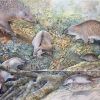 +23 +1
+23 +1Australian scientists identify ‘Age of Monotremes’
Evidence of the oldest known platypus and a new species ‘echidnapus’.
-
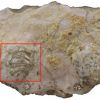 +35 +1
+35 +1Paleontologist discovers rare soft tissue in fossil of crab
Most animals and plants never fossilize. For those that do, it's usually only hard parts such as bones and shells that preserve. However, in some exceptional cases, soft tissues such as muscles and gills survive the fossilization process and can present a wealth of information about the biology and ecology of ancient organisms.
-
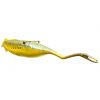 +18 +1
+18 +170-Year-Old Mystery Over Bizarre 'Tully Monster' May Finally Have Been Solved
The most thorough study yet of a mysterious creature that lived 300 million years ago has ruled that it had no bones after all.
-
 +19 +2
+19 +2Boy finds 480 million-year-old fossil in garden using set he got for Christmas
A six-year-old boy has found a fossil up to 488 million years old while digging in his garden with a fossil-hunting set he received for Christmas. Siddak Sing Jhamat, known as Sid, had been digging in his garden in Walsall, in the West Midlands, "for worms and things like pottery and bricks", he said.
-
 +13 +1
+13 +1Genetics Steps In to Help Tell the Story of Human Origins
It’s not unusual for geochronologist Rainer Grün to bring human bones back with him when he returns home to Australia from excursions in Europe or Asia. Jawbones from extinct hominins in Indonesia, Neanderthal teeth from Israel, and ancient human finger bones unearthed in Saudi Arabia have all at one point spent time in his lab at Australian National University before being returned home.
-
 +14 +1
+14 +1Half-billion-year-old, fern-like animals may be the first social network
Rangeomorphs, fern-like animals from the Ediacaran period, were distinguished, to say the least. In their hey day, these early lifeforms colonized entire sea floors and grew up to two meters tall. They may also have created the first social network on the planet.
-
 +1 +1
+1 +1Head of giant 330-million-year-old shark found in wall of Kentucky cave
The shark was likely similar in size to great whites, which grow to an average of around 15 feet.
-
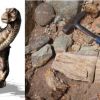 +3 +1
+3 +1A Titanosaur in Ecuador? New Dinosaur Discovered!
The fossils of a previously unknown titanosaur have been found in Ecuador. The medium to small-sized dinosaur lived 85 million years ago, during the Upper Cretaceous period. Its remains were discovered in the southern end of the country in the Loja province. It is the first time dinosaur fossils have been identified in Ecuador and the northernmost example of its sauropod subfamily found to date.
-
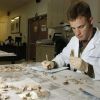 +13 +1
+13 +1The human body never truly disappears—finding the remnants of a tragic end can help us uncover atrocities
The dead are never really gone. In archaeology and the forensic sciences, that's quite literally true. Though people tend to think that mortal remains quickly turn to nothing, in reality, the human body is very resilient and can persist for hundreds and even thousands of years.
-
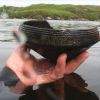 +4 +1
+4 +1New evidence suggests Scottish crannogs thousands of years older than thought
A pair of archaeologists, one with the University of Reading, the other the University of Southampton, has found evidence that suggests some crannogs in Scotland were built during the Neolithic period, several thousand years ago. The researchers, Duncan Garrow and Fraser Sturt, have written a paper about their findings published in Antiquity.
-
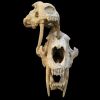 +9 +1
+9 +1Fossils reveal saber-toothed cats may have pierced rivals’ skulls
Saber-toothed cats may sometimes have wielded their formidable canine teeth as deadly weapons to puncture the skulls of rival cats. It was already suspected that Smilodon cats used their huge canines to take down prey, perhaps by ripping out the prey’s throat (SN: 3/30/19, p. 20). But some researchers argued that the daggerlike teeth, which could grow up to 28 centimeters long in the largest species, were too thin and fragile to puncture bone without breaking.
-
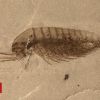 +17 +1
+17 +1Huge fossil discovery made in China
Scientists say they have discovered a "stunning" trove of thousands of fossils on a river bank in China. The fossils are estimated to be about 518 million years old, and are particularly unusual because the soft body tissue of many creatures, including their skin, eyes, and internal organs, have been "exquisitely" well preserved.
-
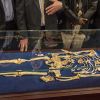 +18 +1
+18 +1Exclusive: Controversial skeleton may be a new species of early human
More than twenty years after it was first discovered, an analysis of a remarkable skeleton discovered in South Africa has finally been published – and the specimen suggests we may need to add a new species to the family tree of early human ancestors. The analysis also found evidence that the species was evolving to become better at striding on two legs, helping us to understand when our lineage first became bipedal. The specimen, nicknamed “Little Foot”, is a type of Australopithecus, the group of hominins to which the famous fossil “Lucy” belonged.
-
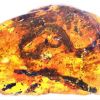 +17 +1
+17 +1First fossilized snake embryo ever discovered rewrites history of ancient snakes
The first-ever discovery of an ancient snake embryo, preserved in 105-million-year-old amber, provides important new information on the evolution of modern snakes, according to a new study led by University of Alberta paleontologists. “This snake is linked to ancient snakes from Argentina, Africa, India and Australia,” explained paleontologist Michael Caldwell, lead author and professor in the Department of Biological Sciences. “It is an important—and until now, missing—component of understanding snake evolution from southern continents, that is Gondwana, in the mid-Mesozoic.”
-
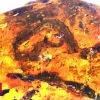 +10 +1
+10 +1Baby snake fossil 'frozen in time'
The fossil of a baby snake has been discovered entombed inside amber. The creature has been frozen in time for 99 million years. The snake lived in what is now Myanmar, during the age of the dinosaurs. Scientists say the snake fossil is "unbelievably rare". "This is the very first baby snake fossil that we have ever found," Prof Michael Caldwell of the University of Alberta in Canada told BBC News.
-
 +25 +1
+25 +1The Oldest Fossils Ever Discovered
Scientists have just unearthed what they claim to be the oldest fossils ever found on our planet. They're so ancient they predate the next oldest finds by roughly a quarter-billion years. These newly uncovered fossils are 3.7-billion-year -old traces of ancient microbes, and were found under recently melted perennial snow in southwest Greenland. The fossils were discovered by a team of geologists and paleontologists led by Allen Nutman at the University of Wollongong in Australia.
-
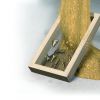 +17 +1
+17 +1Where And How To Sift For Your Own Fossils
You don’t need to be a paleontologist or travel through remote canyons to find exquisite fossils. The teeth, shells, and bones of ancient animals could lurk in a creek, quarry, or on a beach near you. Once you find a good location—the map below shows a bunch of spots—you’ll need to separate fossils from surrounding soil. A mesh-lined letter tray works in a pinch, but the best option is to build your own sifter. We like this rig made from ¼-inch hardware cloth and 1-inch-by-2-inch planks.
Submit a link
Start a discussion




















